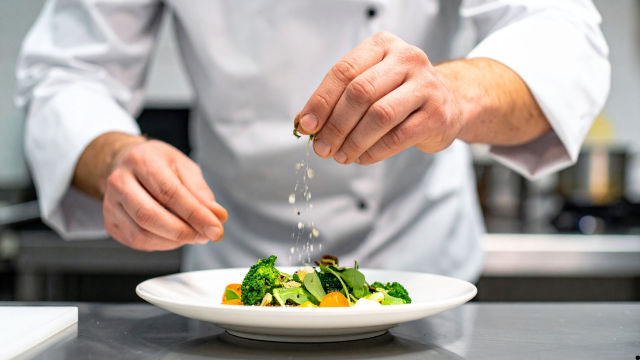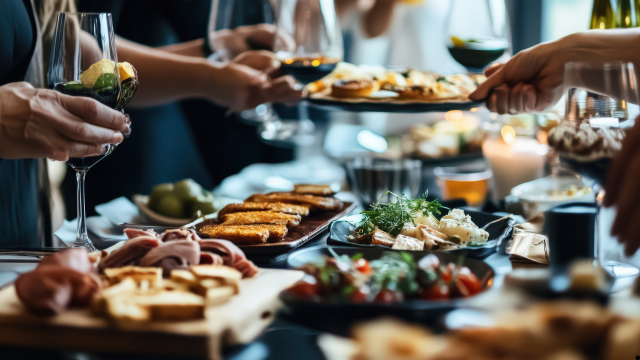Each region of India has its own food story, from the spicy gravies in the north to the coconut-infused stews in the south. Recently, the word “gourmet” has started to show up in more than just fancy restaurants. It’s also used in home kitchens, cloud kitchens, and delivery apps.
The Origin of Gourmet Dining
The word “gourmet” comes from French. In the 18th century, it was used to talk about people who had good taste in food and drink, especially wine. Over time, it came to represent food that was carefully crafted with premium ingredients and precise techniques. Gourmet dining became synonymous with exclusivity — a space where cooking turned into an art form and eating became an experience.
When the idea came to India during the colonial period, it mixed with the country’s own cooking styles. Long before the word “gourmet” became popular, the royal kitchens of Rajasthan, Awadh and Hyderabad had already mastered the art of fine dining. People who cook fine food today talk about how carefully and precisely they make dishes like Nihari, Biryani and Laal Maas. The Mughals tried out foods from Central Asia and Persia, while the British brought in Western styles of serving food and meals with more than one course.
How Gourmet Food Evolved in India
For a long time, only five-star hotels and fancy restaurants served gourmet food. People only went to “continental” restaurants for special occasions, like anniversaries or business meetings. Chefs like Imtiaz Qureshi and Sanjeev Kapoor helped Indian food gain respect in high-end restaurants. At the same time, international chefs like Marco Pierre White and Gordon Ramsay made an entry into the Indian drawing rooms through TV and travel.
Then came the internet age, everything at fingertips. Food blogs, travel shows and cooking competitions made gourmet experiences reach far flung areas via screens. In cities like Mumbai, Delhi, Bengaluru and Goa, more and more boutique restaurants started trying out fusion foods like tandoori salmon, butter chicken risotto and kulcha tacos. Truffle oil, avocado and quinoa, which used to be hard to find, started showing up on Indian plates.
The Home Chef and Gourmet Culture

During the pandemic, home cooks and small cloud kitchens started putting together gourmet meals for delivery, which was another big change. People stopped making reservations and started ordering chef’s specials to eat at home. The focus shifted to craftsmanship, authenticity and presentation, even when the meal was eaten on the couch. This was true for everything from artisanal pasta to Japanese bento boxes.
Social media was also a factor. Food became a form of visual art on Instagram and YouTube. People became interested in foods they had never tried before. All of a sudden, Ratatouille and Rogan Josh could both be on the same dinner table.
Zomato’s Role in Democratizing Gourmet Dining
What used to be a special event is now just a few taps away. Zomato has made gourmet food easier to get than ever with its huge network of restaurants and cloud kitchens. You can look through curated collections like Fine Dining, Chef’s Specials or Luxury Takeaway to find high-end restaurants in your area. The app also helps people find new foods, look at full menus, and read real reviews before they order.
Zomato now lists the menus of even smaller gourmet brands and independent chefs. You can find everything from handmade sushi rolls and sourdough pizzas to desserts made with matcha or Belgian chocolate. The platform also shows hygiene ratings and how to prepare the food, so people who love food can make smart choices while enjoying something fancy.
Related Stories:
Paneer, Please! 9 Delicious Paneer Dishes You’ll Love
All About Aloo: Delicious Navratri Snacks You Can’t Say No To



